Mikacin (Amikacin) Injection vs Alternative Antibiotics: Quick Comparison
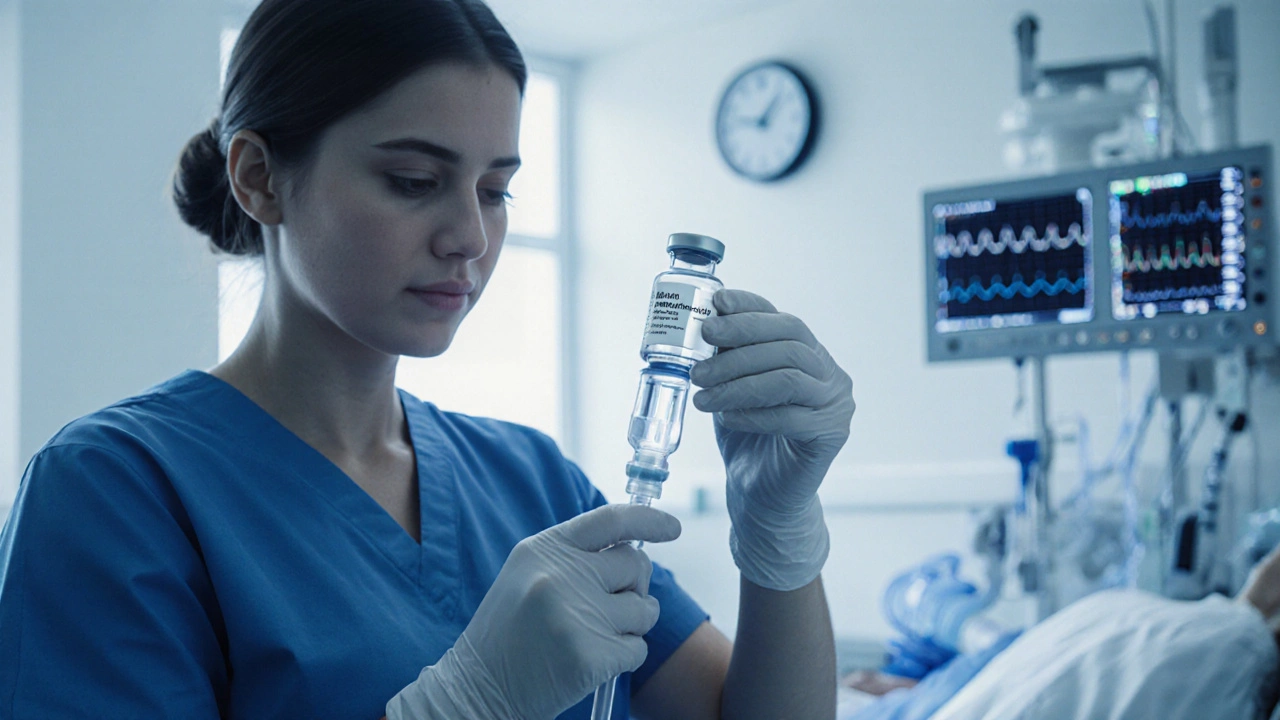
Antibiotic Selection Guide: Mikacin vs Alternatives
Recommended Antibiotic Choice
Detailed Analysis
| Attribute | Amikacin (Mikacin) | Gentamicin | Tobramycin | Vancomycin | Ceftriaxone | Imipenem |
|---|---|---|---|---|---|---|
| Spectrum | Broad gram-negative; some gram-positive | Gram-negative, limited gram-positive | Gram-negative, strong Pseudomonas | Gram-positive, MRSA coverage | Gram-negative & gram-positive, some anaerobes | Ultra-broad, including ESBL-producing Enterobacteriaceae |
| Nephrotoxicity | Moderate; requires TDM | Higher; especially with prolonged therapy | Similar to gentamicin | Low renal risk | Low renal risk | Low to moderate; dose-adjust in renal failure |
| Ototoxicity | Potential, less than gentamicin | Higher risk | Comparable to gentamicin | Negligible | Negligible | Rare |
| Dosing Frequency | Once-daily (15-20 mg/kg) or divided | Every 8 h (5-7 mg/kg) | Every 8 h (5-7 mg/kg) | Every 12 h or continuous infusion | Once daily (1-2 g) | Every 6–8 h (500 mg–1 g) |
| Therapeutic Drug Monitoring | Recommended (peak/trough) | Required (peak/trough) | Required (peak/trough) | Optional (trough for high-dose) | Not routinely needed | Optional (trough for ICU) |
| Resistance Issues | Effective against many gentamicin-resistant strains | Increasing resistance (aac(6')-Ib) | Similar to gentamicin | VanA/VanB mediated resistance | ESBL & some carbapenemases | Carbapenemases (KPC, NDM) emerging |
| Cost (US$ per dose) | ~$15-$20 | ~$5-$8 | ~$6-$9 | ~$30-$40 | ~$12-$15 | ~$25-$35 |
| Pregnancy Category | Category D (risk of fetal ototoxicity) | Category D | Category D | Category B | Category B | Category B |
When a severe bacterial infection hits, doctors need a fast, reliable antibiotic that can kill tough germs without causing too many side effects. Mikacin injection is often on that shortlist, but it isn’t the only option. This guide breaks down how Mikacin (Amikacin) stacks up against the most common alternatives, so you can see which drug fits a given infection, patient profile, and hospital budget.
What is Mikacin Injection (Amikacin)?
Amikacin is a semi-synthetic aminoglycoside antibiotic marketed in many countries under the brand name Mikacin. First approved in the 1970s, it was designed to overcome bacterial resistance that had rendered older aminoglycosides like gentamicin less effective. Administered intravenously or intramuscularly, Mikacin delivers high plasma concentrations that penetrate deep tissue infections, especially those caused by gram‑negative rods.
How Amikacin Works
Amikacin binds to the 30S subunit of bacterial ribosomes, causing misreading of mRNA and producing faulty proteins. This leads to rapid bacterial cell death, a hallmark of the aminoglycoside class. Because it requires oxygen to enter bacterial cells, it’s most potent against aerobic gram‑negative organisms such as Pseudomonas aeruginosa, Escherichia coli, and Klebsiella pneumoniae. It also has activity against some gram‑positive bacteria, though it’s not the first‑line choice for those.
When Clinicians Choose Mikacin
Typical indications include severe hospital‑acquired pneumonia, complicated urinary tract infections, intra‑abdominal sepsis, and bloodstream infections where resistant gram‑negative pathogens are suspected. It’s especially useful when the organism’s susceptibility profile shows resistance to gentamicin or tobramycin, or when a patient has a history of aminoglycoside‑resistant infections.
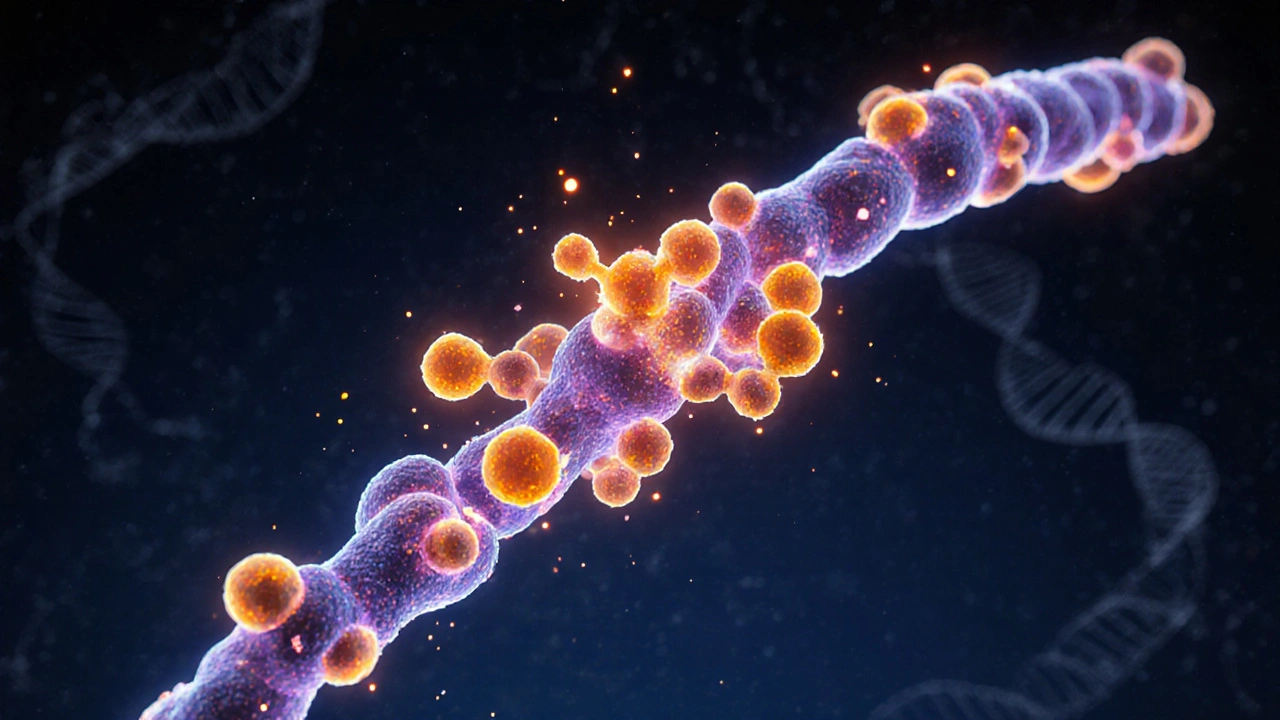
Key Comparison Criteria
To decide whether Mikacin is the right fit, compare it against alternatives on these axes:
- Spectrum of Activity: Which bacteria are covered?
- Nephrotoxicity & Ototoxicity: Risk of kidney or hearing damage.
- Dosing Convenience: Frequency, need for therapeutic drug monitoring (TDM).
- Resistance Patterns: Current local antibiograms.
- Cost & Availability: Hospital formulary pricing.
- Special Populations: Use in pregnancy, renal impairment, pediatric patients.
Side‑by‑Side Comparison
| Attribute | Amikacin (Mikacin) | Gentamicin | Tobramycin | Vancomycin | Ceftriaxone | Imipenem (Carbapenem) |
|---|---|---|---|---|---|---|
| Spectrum | Broad gram‑negative; some gram‑positive | Gram‑negative, limited gram‑positive | Gram‑negative, strong Pseudomonas | Gram‑positive, MRSA coverage | Gram‑negative & gram‑positive, some anaerobes | Ultra‑broad, including ESBL‑producing Enterobacteriaceae |
| Nephrotoxicity | Moderate; requires TDM | Higher; especially with prolonged therapy | Similar to gentamicin | Low renal risk | Low renal risk | Low to moderate; dose‑adjust in renal failure |
| Ototoxicity | Potential, less than gentamicin | Higher risk | Comparable to gentamicin | Negligible | Negligible | Rare |
| Dosing Frequency | Once‑daily (15‑20 mg/kg) or divided | Every 8h (5‑7 mg/kg) | Every 8h (5‑7 mg/kg) | Every 12h or continuous infusion | Once daily (1‑2g) | Every 6-8h (500mg-1g) |
| Therapeutic Drug Monitoring | Recommended (peak/trough) | Required (peak/trough) | Required (peak/trough) | Optional (trough for high-dose) | Not routinely needed | Optional (trough for ICU) |
| Resistance Issues | Effective against many gentamicin‑resistant strains | Increasing resistance (aac(6')‑Ib) | Similar to gentamicin | VanA/VanB mediated resistance | ESBL & some carbapenemases | Carbapenemases (KPC, NDM) emerging |
| Cost (US$ per dose) | ~$15‑$20 | ~$5‑$8 | ~$6‑$9 | ~$30‑$40 | ~$12‑$15 | ~$25‑$35 |
| Pregnancy Category | Category D (risk of fetal ototoxicity) | Category D | Category D | Category B | Category B | Category B |
Pros and Cons of Each Option
Gentamicin is cheap and widely available. Its downside is a higher kidney‑toxicity profile and growing bacterial resistance, making it less reliable for multi‑drug‑resistant infections.
Tobramycin shines against Pseudomonas aeruginosa, especially in cystic fibrosis patients. However, it shares the ototoxic risk of gentamicin and doesn’t overcome gentamicin‑resistance mechanisms.
Vancomycin is the go‑to drug for gram‑positive MRSA infections. Its glaring weakness is that it does nothing for gram‑negative bugs, so you often need a companion agent.
Ceftriaxone offers once‑daily dosing and excellent gram‑positive and gram‑negative coverage, but it falls short against resistant Enterobacteriaceae producing extended‑spectrum beta‑lactamases (ESBLs).
Imipenem (a carbapenem) covers the broadest range, including many ESBL‑producing strains. The trade‑off is cost, and the growing threat of carbapenem‑resistant organisms limits its long‑term utility.
How to Choose the Right Agent
Think of antibiotic selection as a decision tree. Start with the suspected pathogen and local susceptibility data. If the bug is a gram‑negative rod that’s resistant to gentamicin, Amikacin often becomes the preferred aminoglycoside. If the infection is mixed gram‑positive/gram‑negative, you may pair Amikacin with a beta‑lactam or switch to a carbapenem if beta‑lactam resistance is high.
Next, weigh patient factors. Renal impairment pushes you toward drugs with lower nephrotoxicity-vancomycin or ceftriaxone-unless the infection demands a potent aminoglycoside. For patients with hearing issues, avoid any aminoglycoside if possible.
Finally, consider logistics. Once‑daily dosing of Amikacin reduces nursing workload compared to every‑8‑hour regimens of gentamicin or tobramycin, but it still requires peak/trough monitoring. If your facility lacks reliable TDM, a drug like ceftriaxone or vancomycin (with less intensive monitoring) may be more pragmatic.
Practical Tips for Clinicians
- Therapeutic Drug Monitoring: Target peak 30‑45µg/mL and trough <10µg/mL for Amikacin. Adjust doses for creatinine clearance <60mL/min.
- Hydration: Adequate IV fluids lower nephrotoxicity risk for all aminoglycosides.
- Duration: Limit therapy to 7‑10days for most infections unless there’s a deep‑seated source that needs longer treatment.
- Combination Therapy: Pair Amikacin with a beta‑lactam for synergistic effect against Pseudomonas, especially in severe pneumonia.
- Allergy Checks: Although rare, watch for hypersensitivity reactions with any parenteral antibiotic.
Next Steps and Troubleshooting
If a patient on Amikacin develops rising creatinine, first verify dosing based on current renal function, then consider switching to a less nephrotoxic agent like ceftriaxone (if susceptibility allows) or a carbapenem. For ototoxicity signs-tinnitus or balance issues-stop the aminoglycoside immediately and assess auditory function.
When microbiology reports reveal resistance to Amikacin, pivot quickly to the next best option from the table. Remember, the goal is to control infection while minimizing collateral damage to the patient’s kidneys and ears.
Frequently Asked Questions
What makes Amikacin more effective than gentamicin against resistant bugs?
Amikacin’s chemical structure includes a hydroxy‑aminobutyric acid side chain that blocks the common aminoglycoside‑modifying enzymes (e.g., AAC(6')‑Ib). This means many bacteria that have become resistant to gentamicin remain susceptible to Amikacin.
Do I need to monitor drug levels for all aminoglycosides?
Yes. Peak and trough concentrations guide dosing, help avoid toxicity, and ensure the drug reaches bactericidal levels. Most hospitals have protocols for gentamicin, tobramycin, and Amikacin.
Can Amikacin be used in pregnancy?
Amikacin is classified as Category D, meaning there’s evidence of fetal risk (ototoxicity). It’s only used if the benefits outweigh the risks and no safer alternatives exist.
How does the cost of Amikacin compare to carbapenems?
Amikacin is generally cheaper ($15‑$20 per dose) than carbapenems like Imipenem ($25‑$35 per dose). However, total cost also includes monitoring and possible renal support if toxicity occurs.
When should I combine Amikacin with another antibiotic?
Combination is advised for severe Pseudomonas infections, septicemia, or when the pathogen is only partially susceptible. Pairing with a beta‑lactam (e.g., piperacillin‑tazobactam) provides synergistic killing.

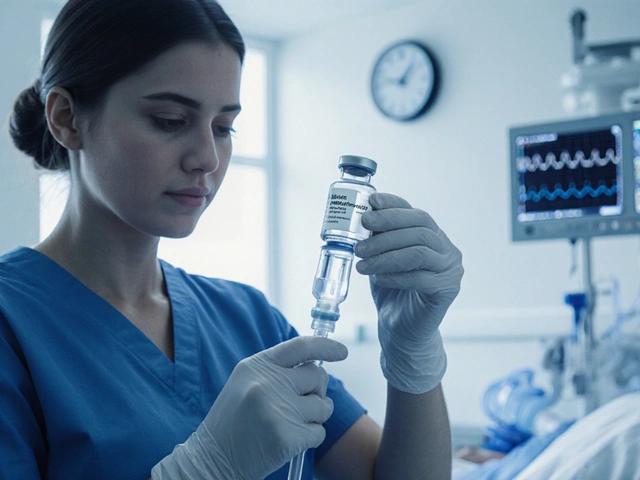
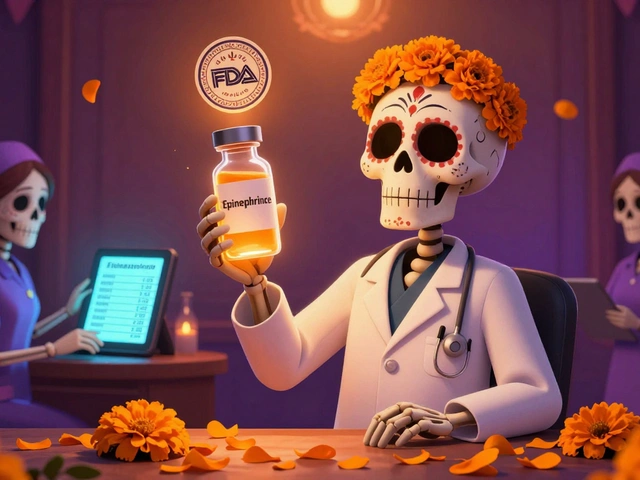

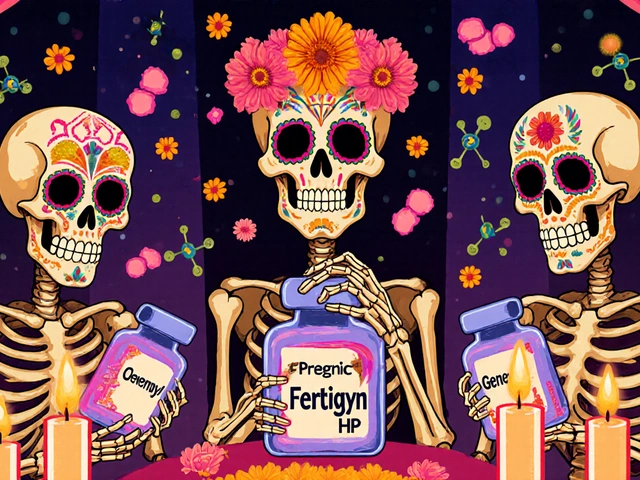


Amikacin's pharmacodynamic profile is characterised by concentration-dependent bactericidal activity, with a post‑antibiotic effect that outlasts the serum half‑life. The drug exhibits high affinity for the A‑site of the 30S ribosomal subunit, resulting in misincorporation of amino acids and rapid cell death. Compared with gentamicin, the minimum inhibitory concentration (MIC) distribution shows a leftward shift for many Enterobacteriaceae, indicating retained potency against gentamicin‑resistant mechanisms such as AAC(6′)‑Ib. Renal clearance remains the dominant elimination pathway; thus, dose adjustment is mandatory in creatinine clearance <30 mL/min, guided by therapeutic drug monitoring (TDM) of peak and trough levels. While ototoxicity risk is modestly lower than that of gentamicin, cumulative exposure still mandates periodic audiometry, particularly in prolonged regimens.
Amikacin achieves reliable peak concentrations with once‑daily dosing.
Hey folks, let’s unpack why amikacin can be the hero in a stubborn gram‑negative showdown – it swoops in with broad coverage, sidesteps many resistance traps, and still plays nice with the kidneys when you keep an eye on the levels. Imagine it as the Swiss‑army knife of aminoglycosides: versatile, tough, and ready for the unexpected. Pair it with a beta‑lactam for mixed infections and you’ve got a combo as harmonious as peanut butter and jelly. Just remember, the otic side‑effects are like that occasional plot twist – rare, but worth monitoring. Stay curious, stay safe, and keep those drug‑monitoring charts sparkling!
Ah, the oft‑overlooked intricacies of aminoglycoside stewardship!!! One must, with a flourish of scholarly gravitas, recognize that amikacin-though laudably robust-carries a subtle, yet palpable, risk of nephro‑toxicity; a nuance that, defiantly, many clinicians overlook!!! Moreover, the pharmacokinetic gymnastics required for optimal peak‑trough ratios are nothing short of a biochemical ballet-truly, a dance of dosage that the uninitiated might deem overly complex!!! Yet, for those willing to embrace the challenge, the reward is a formidable bulwark against multidrug‑resistant gram‑negatives…let us not forget the occasional ototoxic echo, a whisper in the auditory corridors that demands vigilant audiometric surveillance!!!
While amikacin looks shiny, I’d still opt for a carbapenem in most ICU cases.
Oh my goodness, can we talk about the sheer drama when you think you’ve nailed the perfect dose of amikacin, only to watch the labs scream “adjust!”? It’s like a soap opera in the ICU – the tension, the suspense, the heroic dose‑adjustment climax! And yes, the kidney whispers its concerns, but don’t let that steal the spotlight – the drug’s bacterial annihilation is the true star of the show. Trust me, a little drama keeps us on our toes!
Amikacin is a great choise for tough infections, just remember to check the kidneys and ears regularily. You’ll do fine, and the patients will bounce back quicker than you think!